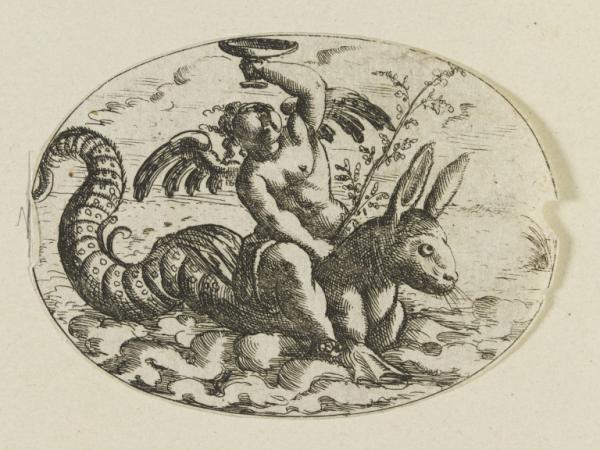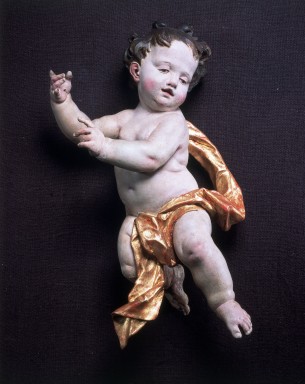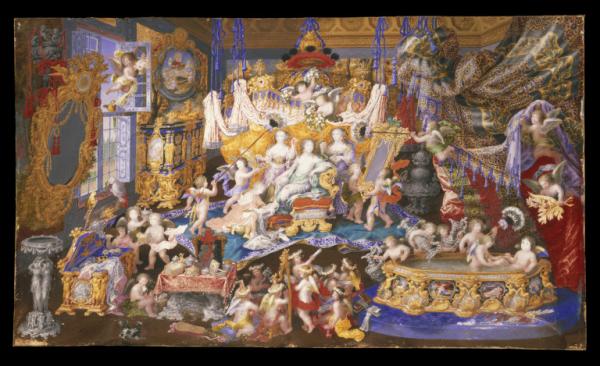Last week we decided how to make a putto fly.

A putto (plural putti) is a figure represented in art as a chubby male child, often nude and sometimes with wings. This particular putto is a statuette made from limewood which was then painted and gilded. He was made in South Germany around 1755-60 and will be featuring in a display on Christianity in the Age of Enlightenment.
He probably once formed part of an altarpiece and (with other putti) would have supported or gestured towards either the main scene or a subsidiary symbol. The putto does not have wings but is flying with both arms raised (presumably having previously held something aloft). His head is turned to his left, with his eyes gazing downwards. He is naked except for a golden ‘scarf’, hanging from the back of his right shoulder and passing across his left thigh.

He is going to be mounted out from a wall (a division between the windows to be precise) and so decisions need to be made on how exactly he is to be held in place, in what position, at what angle and at what height.
These are decisions that need to be made collectively between:
- The Europe Galleries curators – to ensure that it works with the design of the rest of the display and the galleries as a whole
- A Curator from the Sculpture collection – who is most familiar with the object, its context and how it would most likely have originally been displayed
- Conservation – to advise on what display methods would be most appropriate in terms of protecting the object
- Technicians and mount-makers – to guide on what display methods are technically possible and practical
We met together in the Mount-Making Workshop to discuss possibilities and experiment with the actual object. Andy, one of the Museum technicians, attached the putto to a backboard using a prototype mount attachment. This meant that we could experiment positioning it at different horizontal angles.

We used the hang of the ‘scarf’ and the position of his arms to help guide on the most appropriate horizontal angle for display.

We also needed to decide on the angle at which he will project out from the wall – should he remain upright or should he lean out (looming?) over visitors?
He will be positioned quite high up on the wall. For practical reasons we weren’t able to experiment with holding him at this height in the workshop. To overcome this, we studied the gallery plans closely to consider the putto’s position in relation to nearby cases. We also looked at the object from a variety of angles while keeping it firmly held and close to terra firma.

Putti are distinct from, but often confused with, ‘cherubs’ (cherubim) which are biblical angels with multiple faces and several pairs of wings. Whereas cherubim represent angelic beings, putti are secular and represent non-religious passions. The iconography of putti can be extremely varied. They have no unique, directly identifiable attributes. This allows them to have multiple meanings within art but also means that it can be difficult to differentiate between putti, cupids, and other forms of angels. To add to this confusion, during the Baroque period, the putto began to be increasingly used to represent the omnipresence of God.
The most common associations that putti represent are: romantic or erotic love, Heaven, peace, prosperity, merriment and leisure.
Putti were an extremely popular subject in art and design during the 17th and 18th centuries. Once I started to keep an eye out for them amongst our objects, they started to seem inescapable. It turns out that the new Europe Galleries will be home to a veritable flock(?) of putti, taking part in a wide variety of activities, including …
Finally, although it is not going into the galleries, I just have to share this entertaining print pf a putto partaking in that most common of pastimes – riding a seamonster with the head of a rabbit.









